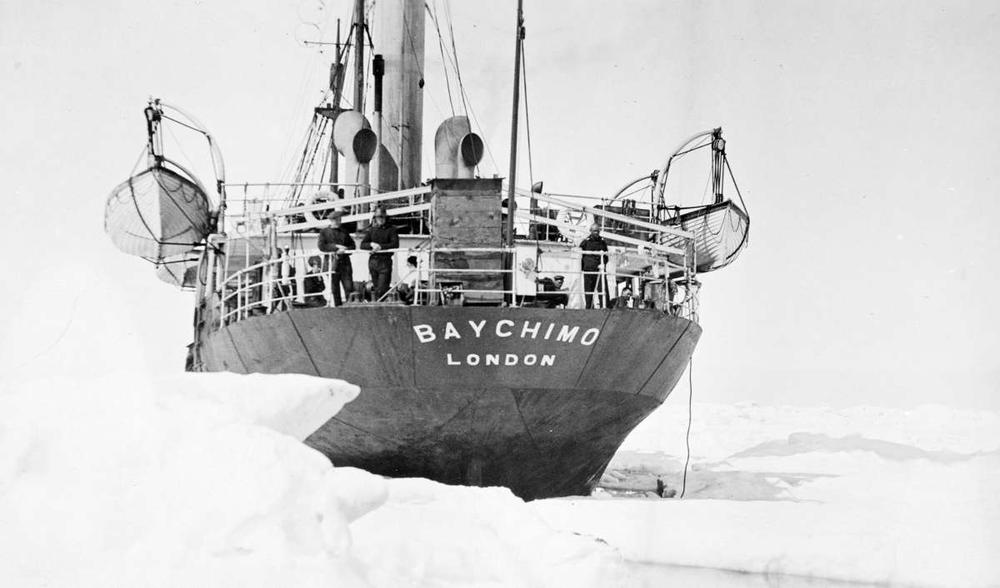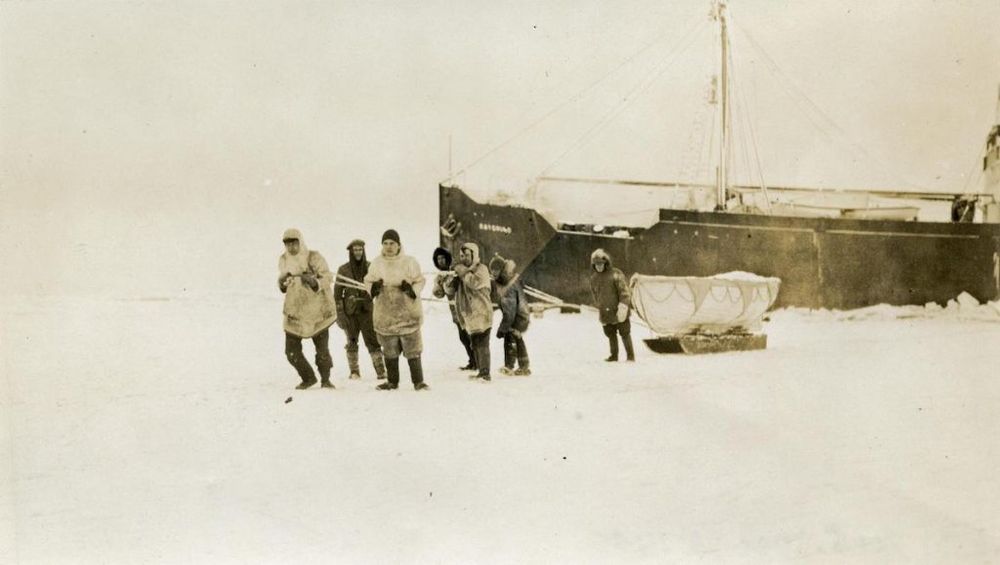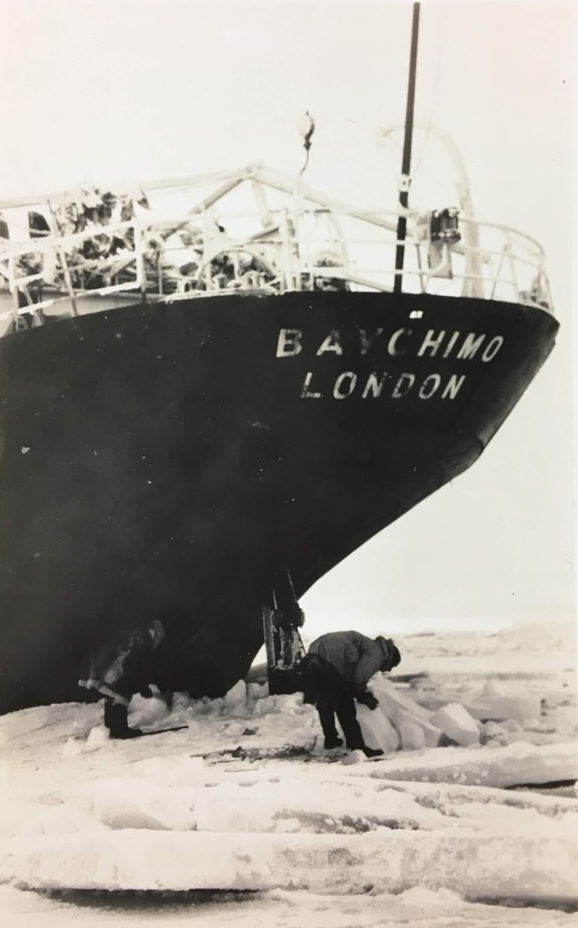Ships aren’t meant to sink, but sometimes you have to wonder what miraculous forces kept a vessel afloat. The SS Baychimo was such a ship. For nearly four decades after it was abandoned, this 1,300-ton cargo ship sailed the Arctic without fuel or crew, until it disappeared just over fifty years ago, but some believe she is still out there drifting among the frozen icebergs.
SS Baychimo was launched in 1914, originally as Ångermanelfven, after one of Sweden’s longest rivers, Ångerman. She was designed and built by the Swedish shipbuilders Lindholmens for a German company based in Hamburg. The vessel had a steel hull 230 feet long, and was powered by a triple expansion steam engine. She was also outfitted with schooner rigging.

Ångermanelfven was used as a trading vessel by her German owners around the Baltic Sea, sailing between Hamburg and Sweden until the First World War began. Following the Great War, she was ceded to the British government as part of Germany's war reparations and was acquired by the Hudson's Bay Company in 1921, whereupon she was renamed Baychimo. Based in Ardrossan, Scotland, Baychimo made routine trips across the North Atlantic between her homeport and Canada visiting trading posts and collecting pelts.
In 1923, Baychimo was assigned to a different route, this time in the Western Arctic, traveling between Vancouver and the Hudson's Bay Company’s posts along the Yukon and Northwest Territories northern coast. Aside from carrying cargo, Baychimo occasionally took passengers, but since she wasn’t legally allowed to carry people, these ocean travelers were listed as part of the crew and were required to work on the ship in exchange for a room and a trip back home.
In late September 1931, on her way back to Vancouver, the Baychimo ran into a surprise blizzard near Point Barrow on Alaska’s northern coast, where she became trapped in pack ice. It became apparent that the crew will have to overwinter in the Arctic, but since Baychimo couldn’t be heated all winter long, the crew decided to leave the ship and set up camp near the town of Barrow, just over half-a-mile away. Throughout the month of October and most of November, some men would return to the ship everyday to clear away ice from the ship’s rudder and other critical piece of equipment.

Baychimo crew removing supplies from the ice-bound ship.
On 24 November a powerful blizzard struck, and when it cleared, the men found the Baychimo gone. The captain and crew assumed the vessel had sunk, but they soon received word that an Inuk hunter had spotted the Baychimo roughly 72 km south of their encampment. The crewmen tracked the ship down, but deciding she was unlikely to survive the winter, they removed the most valuable furs from the hold and abandoned the ship for the last time.
Captain Cornwell and the remaining crew flew back to Vancouver and the company wrote off the vessel and the negligible cargo it held as a loss. Shortly thereafter, the Baychimo was spotted about 480 km to the east of where she was last spotted. The following year, she was seen again floating near the shores of Alaska. In the decades that followed, numerous people sighted the Baychimo all around the Arctic peacefully adrift in the frigid waters. Many times she was boarded by explorers or crews of passing ships, but each time she eluded capture. Once, a group of Alaska Natives boarded her and were trapped aboard for 10 days by a freak storm. In 1969, 38 years after she was abandoned, she was found trapped in an ice pack in Beaufort Sea between Point Barrow and Icy Cape, off the northwestern Alaskan coast. That was the last recorded sighting of Baychimo.

Crew members clearing ice from the Baychimo’s rudder.
Nearly four decades later, in 2006, the Alaskan government began work on a project to find Baychimo as well as an estimated 4,000 ships that had disappeared along the coast of Alaska. The search yielded nothing.
Assuming that the Baychimo had sunk shortly after her last sighting, it still makes her one of the longest sailing ghost ships in the world. Ships rarely survive for so long unmanned, especially among the crushing ice packs. It’s more than likely that the once unsinkable ghost ship now lies somewhere in the cold, muddy bottom of the Arctic Ocean.
References:
# Amelia Fay, Baychimo: The Adventures Of The Ghost Ship Of The Arctic, Manitoba Museum
# Wikipedia



I think the obvious answer is that the hull eventually succumbed to the pressure caused by the ice packs, which caused ruptures and the eventual sinking of the ship.
ReplyDelete